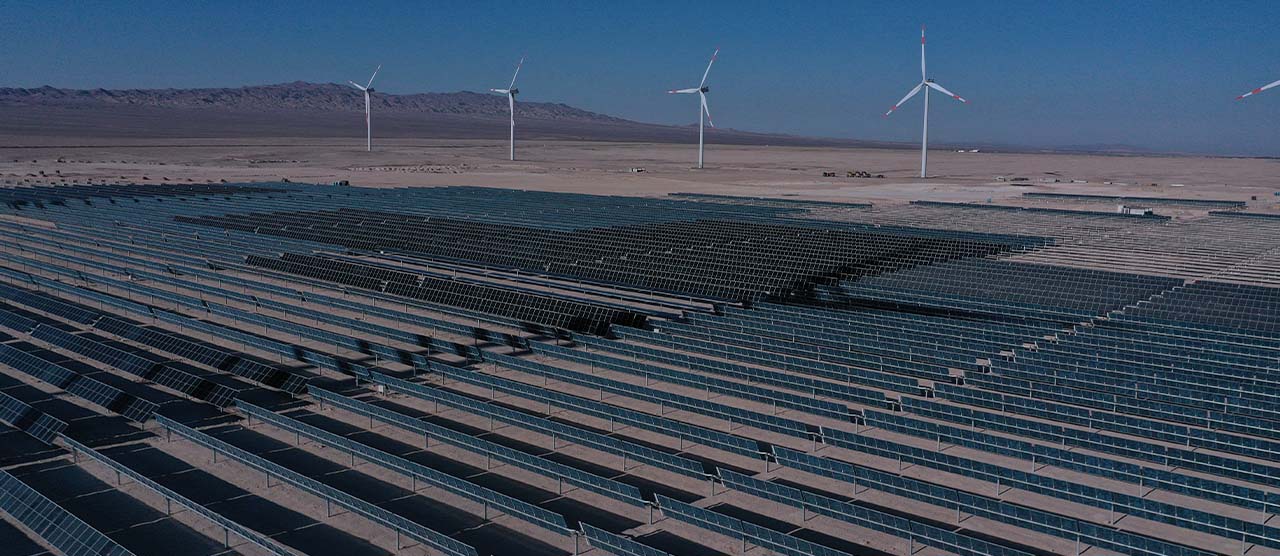
Calama, October 17, 2022 - With the Minister of Energy, Diego Pardow, Enel Green Power Chile inaugurated Central Azabache (60.9 MW). The country's first hybrid non-conventional renewable generation plant, thanks to its joint operation with the Valle de Los Vientos wind farm (90 MW), a feature that further reduces the environmental impact and provides more efficient electricity production cycles.
"Projects such as Central Azabache are fundamental not only for what they will inject into the National Electric System, but also for how symbolic they are for the rest of our energy matrix. Azabache is a renewable energy project and thus provides the security that the system needs to take responsible steps in the energy transition. The promotion of this type of energy is one of the enabling conditions that we have identified as key to decarbonization," said Diego Pardow, Minister of Energy.
"Central Azabache marks a new milestone in our decarbonization plan that seeks to accelerate a just energy transition in the country, in line with our goal of achieving carbon neutrality by 2040. A little more than two weeks after having disconnected our last coal-fired plant in Chile, this new step from a generation matrix that includes fossil fuels to one based on 100% renewable generation," said Fabrizio Barderi, Enel Chile's general manager.
Located 10 kilometers from Calama, in the Antofagasta Region, Azabache is situated in the Valle de Los Vientos wind farm, where the space between the wind turbines made it possible to locate a solar farm. The consequent use of familiar roads and facilities between wind farms brought further cooperation in construction and operation. Incorporating Azabache into the National Electric System allows this hybrid complex to generate energy practically all day long. The solar plant's peak is between 12:00 and 16:00, and in the case of Valle de Los Vientos, the height will be during the afternoon when the wind is most potent.
It is estimated that the Azabache Power Plant will be able to inject an average of 184 GWh annually into the National Electric System, avoiding the emission of approximately 135,000 tons of carbon dioxide into the atmosphere. It has 154,170 bifacial panels installed, state-of-the-art technology in this area, which allows capturing solar radiation on both sides of the photovoltaic panel, thus transforming it into electric energy, with the possibility of achieving up to 20% higher generation capacity.
Desert Interpretation Center
During the Azabache Power Plant's inauguration ceremony, attendees could also see the Desert Interpretation Center (CID), a facility for disseminating the cultural heritage and identity of the indigenous communities of the Alto Loa. Managed jointly by the communities of Caspana, Toconce, and Ollagüe, the Rondó Foundation, and Enel Green Power, the center seeks to promote local tourism, highlighting the Atacameño and Quechua culture of the Alto Loa.
The infrastructure of the CID is characterized by an architectural design respectful of the desert, incorporating local elements and the communities. It is a gateway to the Alto Loa territory, the beginning of a journey that leads tourists to the most isolated communities through an innovative tourist itinerary, allowing immersion in the landscape's beauty and the way of life in the desert through the narration of the community guides.
Enel Green Power Chile, a subsidiary of Enel Chile, is a leader in the country's renewable energy market, with a diversified portfolio comprising wind (564 MW), solar (1,537 MW), hydroelectric (92 MW) and geothermal (81 MW).

